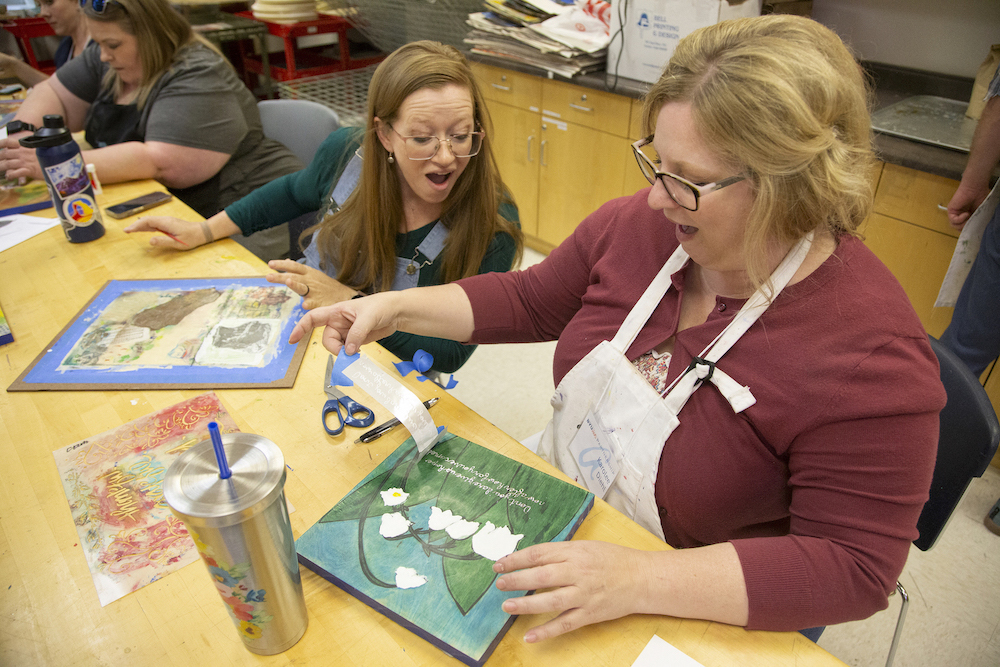Newsletter #1: See, Think, Wonder

Arts Integration Endorsement participants
Charlotte Hawkins
Beverley Taylor Sorenson visual arts educator
“Mrs. Hawkins, I wonder if Vincent painted this in the same place he painted Starry Night, because I see the same tree!” “Mrs. Hawkins, I wonder if it will be ok if I dip the chalk pastel INTO the water, and then paint with it?” “Mrs. Hawkins, I think I might try painting over it in purple, because I don’t like the color.”
Turning the Classroom into a Laboratory of Discovery
Over the last several years, I’ve been turning my classroom into a laboratory of discovery, an artist’s studio, a space to explore, create, and embrace the wonder. Wonder comes at a price. Materials get used or misused. Creativity can be messy and loud, but what I give away in control, my students gain in confidence and the ability to problem solve and think for themselves.
When teachers “embrace wondering and grow comfortable with ambiguity and uncertainty… (it) allows one to remain open to other perspectives, invites a greater sharing of ideas, and avoids early closure and fixes.” (Ron Ritchhart, Cultures of Thinking in Action)
Project Zero, a Harvard Graduate School of Education initiative, creates simple, research-based thinking strategies specifically designed to get students thinking and wondering.
How & Why to Implement Thinking Strategies
See, Think, Wonder is one of those core thinking routines, “applicable across disciplines, topics and age groups” to get students to start thinking, and to provide evidence to support why they think.
The purpose of this strategy is to get students to “make careful observations and thoughtful interpretations” (PZ-Harvard Graduate School of Education). Use this strategy at the beginning or end of a unit to discuss an object, document, or image, and to draw conclusions and make inferences.
- Introduce an object or image
- Give students time to observe and really look
- Ask students to describe what they SEE
- Now, ask students to add what they THINK about what they’re seeing
- Ask follow up questions, “What do you see that makes you say that?” to provide evidence to support their thoughts and to stay away from unsupported opinion
- Ask students to WONDER “What else is going on here?” to find out if they have any remaining questions or thoughts
- This routine is great in a group setting. You may want to document student responses for later consideration
Thinking strategies help teachers learn what and how their students think, and give students the opportunity to notice patterns in their thinking so they can draw on them later. It also begins their path into evidence-based inquiry, and problem solving. What is one way you can embrace inquiry and wonder in your classroom this month?
Subscribe to our Cultures of Thinking newsletter!
You'll get easy-to-apply thinking strategies delivered straight to your inbox every few weeks.






